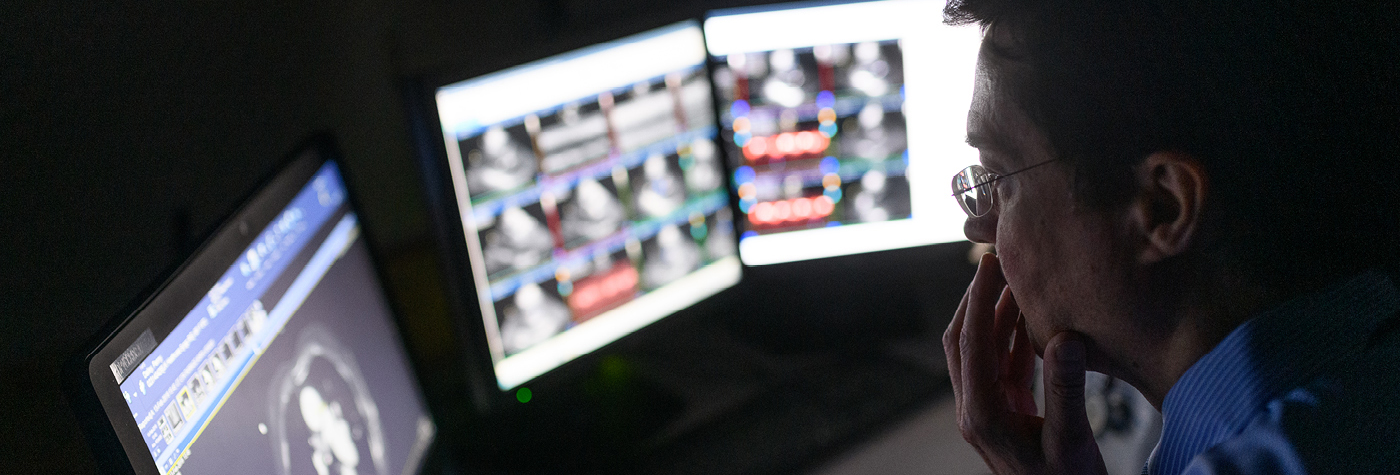Shaping The Use Of TAVR
The UK Gill Heart & Vascular Institute hit a major milestone in 2018: It performed its 300th transcatheter aortic valve replacement (TAVR) procedure, the minimally invasive, catheter-based method used to replace a narrowed aortic valve. This accomplishment is a prime example of how the institute is building one of the most complete and experienced TAVR programs in the region.
Determining the need for TAVR
 It all starts with imaging. Unlike the grainy, fuzzy pictures of the heart produced by traditional equipment, the advanced technologies at Gill provide sharp images, allowing for extremely detailed analysis.
It all starts with imaging. Unlike the grainy, fuzzy pictures of the heart produced by traditional equipment, the advanced technologies at Gill provide sharp images, allowing for extremely detailed analysis.
The images are then reviewed by a multidisciplinary team. The decision of whether to move forward with TAVR is not one person’s to make; multiple specialists weigh in on a patient’s scans. In some cases, the imaging process at Gill eliminates the need for a patient to undergo invasive diagnostics.
“All of our CT scans are reviewed by both a radiologist who specializes in the structural heart as well as a cardiologist who specializes in advanced cardiac imaging,” said Jennifer Vissing, RN, BSN, nurse coordinator of the Structural Heart Program. “Our images are crystal clear. That's better for patients because we ensure that the procedure can be done safely.”
An expert team
The advanced infrastructure and multidisciplinary team behind the TAVR practice has been assembled over many years. Gill is made up of the most experienced interventional cardiologists in the region, including Dr. John Gurley, who is widely known for inventive procedures on challenging cases. He is also recognized as a leader in the field, with substantial published research findings.
The future of TAVR
Results of two multi-site clinical trials, in which Gill is a research site, presented at an American College of Cardiology meeting in March showed that the effectiveness of the less-invasive TAVR procedure for low-risk patients was about the same as the effectiveness of the alternative valve replacement method of open-heart surgery. The U.S. Food and Drug Administration (FDA) had previously approved TAVR for treatment of severe aortic stenosis in patients of intermediate and high risk for surgical complications. But these studies are widely expected to lead to the extension of FDA guidance of TAVR to low-risk patients, and UK is prepared for an influx of new procedures.”
“TAVR is a safe, effective procedure that has been shown to be superior to surgical valve replacement,” Gurley said.
“It is an exciting time in structural heart with the arrival of new technologies, allowing more patients to be treated and making the procedures even safer.” – John Gurley, MD, Director, Structural Heart Program

